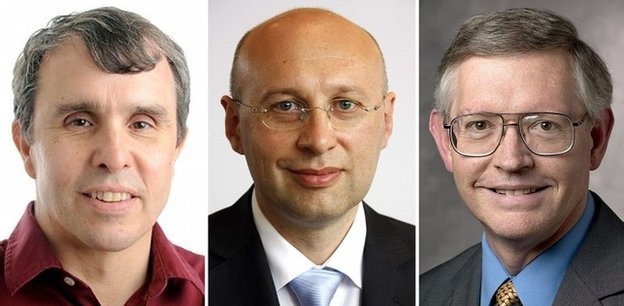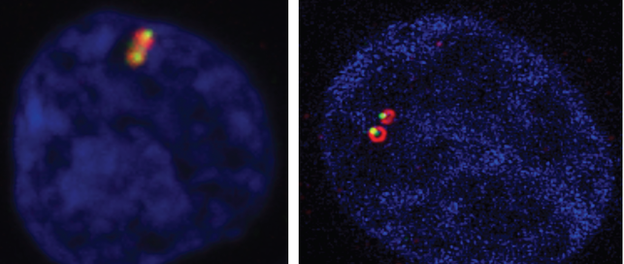Advancements made to the optical microscope by researchers Eric Betzig, Stefan Hell, and William Moerner not only extended the limits of the device, but also won the threesome the 2014 Nobel Prize in Chemistry.

In addition to the notoriety, Betzig, Hell, and Moerner will split the eight million kronor prize (that’s a little over $1 million USD).
The group’s award-winning idea was to use fluorescence to extend the limits of the light microscope. You see, optical microscopes of the past were held back by a presumed limitation—that they cannot obtain a better resolution than half the wavelength of light. It’s an assumption based on a rule known as Abbe’s diffraction limit, which was named after an equation that was published in 1873 by German microscopist Enst Abbe.
To circumvent the limitation, the researchers used fluorescent molecules, which allowed researchers to see things at much higher levels of resolution, and allowed scientists to better visualize molecules inside living cells.

Specifically, the microscope bypasses Abbe’s physical limit of 0.2 micrometers. It might not seem like a lot, but it actually opens doors into the nanoscopic world. In terms of real-world usage, researchers will be able to use this advanced form of technology to explore brain synapses, study the proteins involved in different diseases, and track things like cell division in embryos. Everything that is going on in the human body will now be understood down to the nanoscale level.

The image above shows the significant improvement that super-resolution imaging has to offer. The picture is a cell nucleus that measures approximately 0.006 mm across. The blue markings are DNA, and the “diamond rings” are centrosomes.
Professor Hell, who works at the Max Planck Institute for Biophysical Chemistry in Germany, explained why they took on this project at the news conference in Stockholm:
“I got bored with the topic; I felt this was 19th century physics. I was wondering if there was still something profound that could be made with light microscopy. So I saw that the diffraction barrier was the only important problem that had been left over.
“Eventually I realized there must be a way by playing with the molecules, trying to turn the molecules on and off allows you to see adjacent things you couldn't see before.”
Via BBC
Advertisement
Learn more about Electronic Products Magazine





